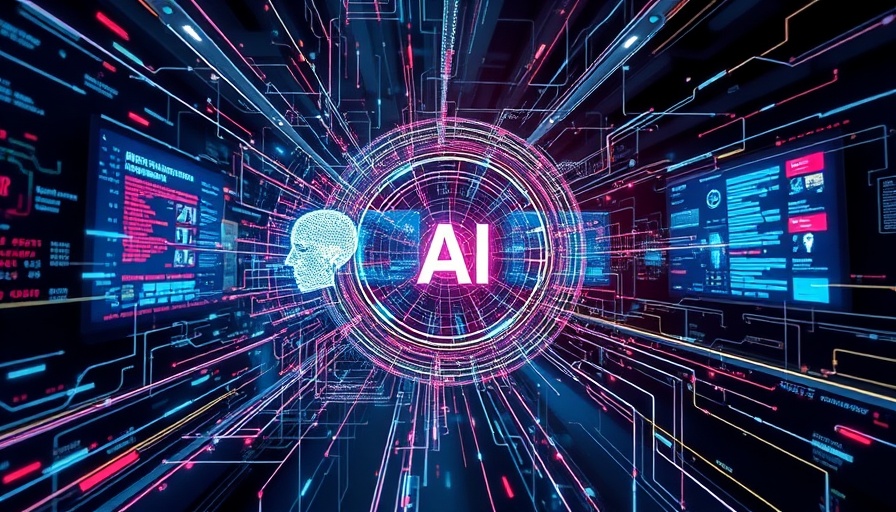
Transforming Your Business: What is the Model Context Protocol?
The Model Context Protocol, or MCP, has rapidly gained traction among small and medium-sized businesses (SMBs) as a transformative standard for integrating AI models across various applications and systems. The industry likens MCP to a universal "USB-C for AI integrations." If you're part of an organization seeking efficient, scalable, and flexible AI solutions, migrating to MCP could be your answer.
A Seamless Bridge to AI Integration
Imagine having a system that allows your AI tools to communicate smoothly with any application, without the frustrations of custom coding. This is the essence of MCP. By implementing an adapter-first strategy, businesses can connect existing software stacks to the standardized MCP interface without the typical headaches associated with custom integration. In this article, we’ll explore why adopting MCP can streamline operations and enhance productivity.
The Benefits of Migrating to MCP
1. Scalability & Flexibility: Organizations often find themselves stumbling over bottlenecks due to rigid systems. MCP’s modular architecture ensures that integrating new tools is simple and does not require extensive rewrites. For SMBs looking to grow, this feature is particularly valuable, enabling quick adaptations to rapidly changing market conditions.
2. Reduced Technical Debt: One of the most significant challenges businesses face is maintaining complex custom integrations. By standardizing the interaction between AI models and applications, MCP minimizes the need for unique, fragile coding. This leads to a noticeable reduction in integration bugs and lower maintenance efforts over time, allowing teams to focus on innovation rather than troubleshooting.
3. Enhanced Interoperability: Whether you're accessing data from cloud databases or employing design tools, MCP facilitates direct interaction with virtually any application through universal adapters. This connectivity expands your business’s capabilities significantly, allowing for a more agile operational environment.
4. Structured Context Exchange: With its schema-enforced context exchange, MCP ensures a systematic flow of commands and data between your AI models and software. Forget the uncertainty and faults of ad-hoc communication methods—MCP’s structured format leads to reliable system performance and better data accuracy.
How MCP Works
MCP operates on a straightforward client-server model:
- MCP Client: This component resides within AI platforms, initiating requests to MCP servers.
- MCP Server (Adapter): This lightweight server exposes an application's functionalities as precise MCP commands, converting natural language into standardized messages for seamless processing.
- MCP Protocol: The communication language governing message exchanges—adaptable across various transport mediums like HTTP and WebSockets, while utilizing JSON Schema for definitions.
It's these elements that enable sophisticated businesses to discover new capabilities dynamically, eliminating the hassle of manual configurations.
Step-by-Step Migration Playbook
Here’s a simplified playbook for integrating MCP into your business:
1. Assessment and Inventory: Begin by cataloging all existing integrations between your AI models and external tools or APIs. Understanding your current landscape is essential in determining the scope of what needs to change.
2. Identify Adapters: Next, explore which adapters will best serve your existing tools. This choice is key to ensuring that your migration process remains as seamless as possible.
3. Pilot Tests: As with any major transition, pilot testing some integrations can save time and headaches later. Attempt to run small-scale tests prior to a full implementation.
Future-Proofing Your Business with MCP
By adopting MCP, SMBs position themselves not just for current compatibility, but for future-proofing against evolving technological landscapes. With the ability to swiftly adapt to new applications and systems, businesses can remain competitive and innovative without being bogged down by intricate coding structures.
For those businesses still hesitant about the move to MCP, remember, every moment spent on fragmented integrations is potential growth lost. Think of MCP not just as a protocol, but as a bridge to a dynamic future.
Take Action Now!
The time to streamline your AI integrations is now. Invest in your business's future by adopting the Model Context Protocol and embrace a more efficient, standardized operational method today. Your team's productivity—and your bottom line—will thank you for it.
 Add Row
Add Row  Add
Add 



Write A Comment